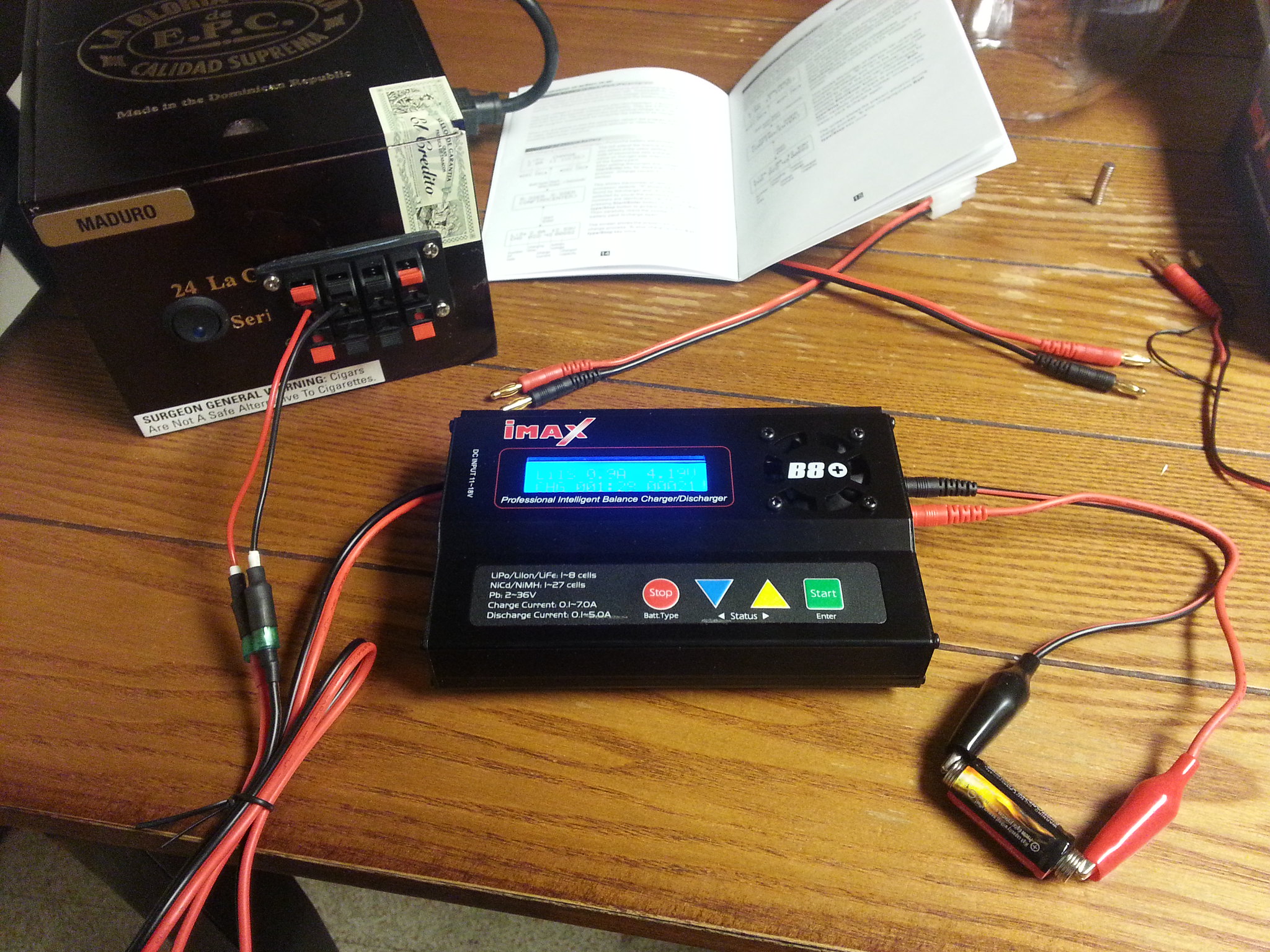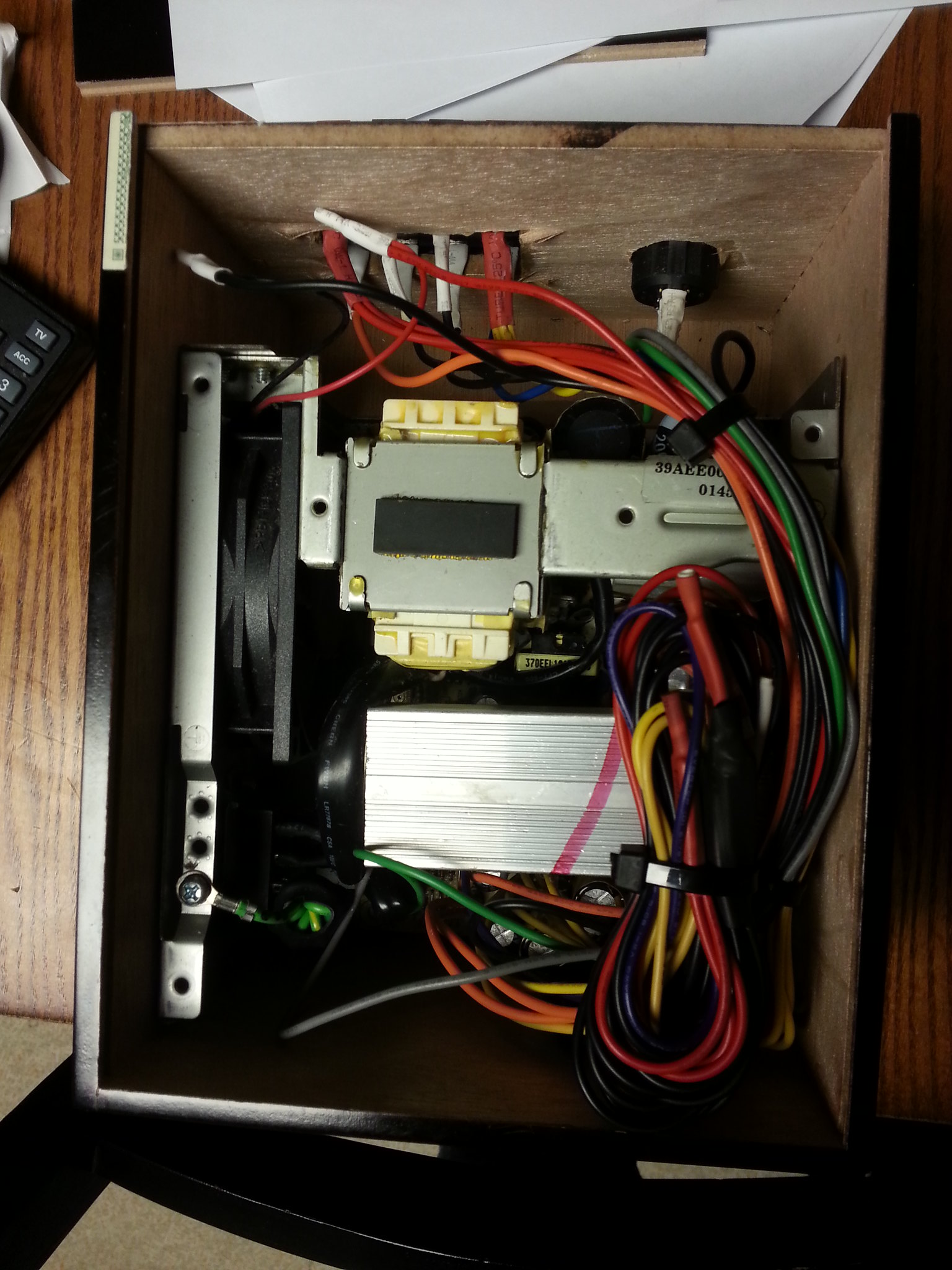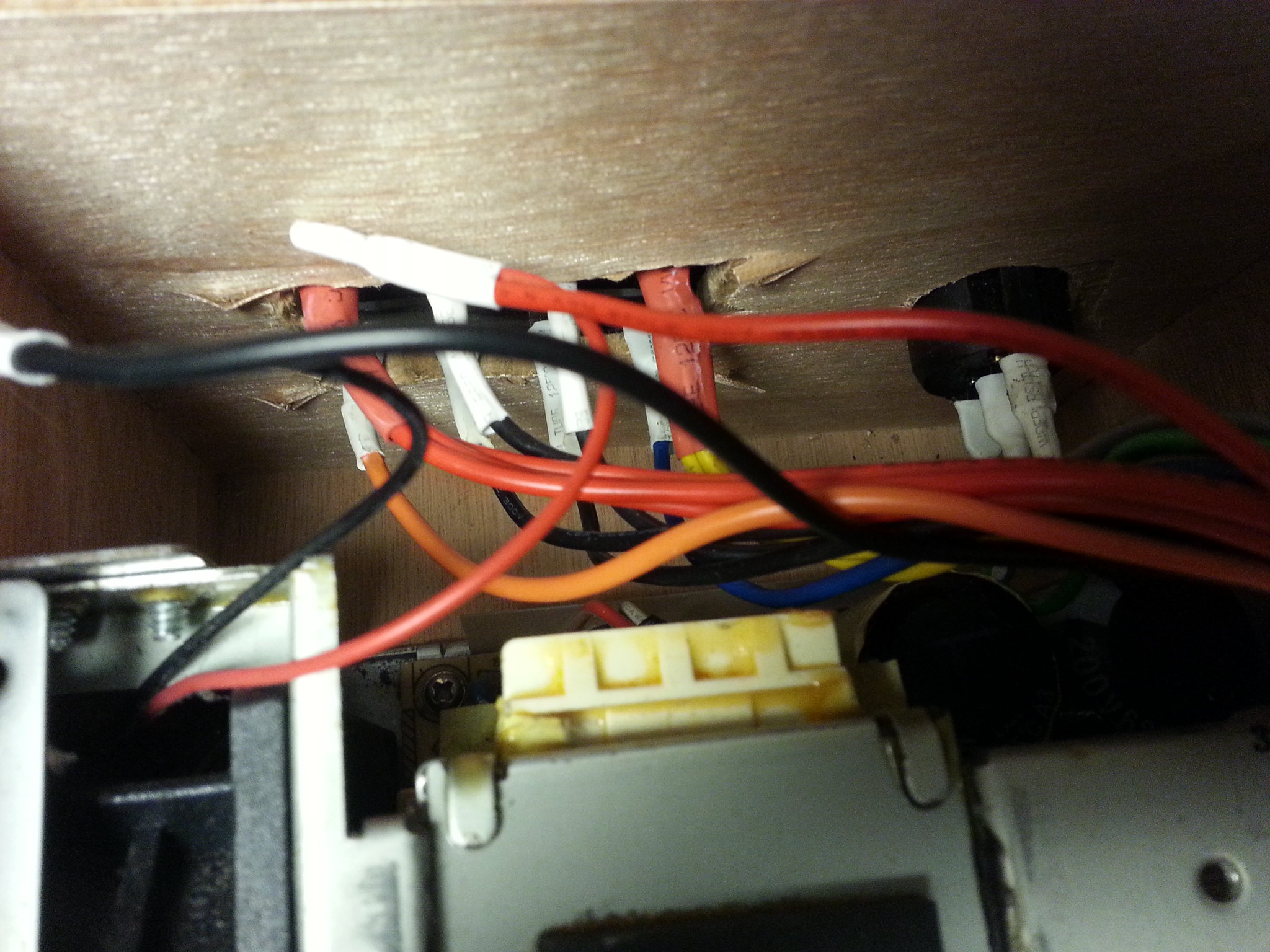Something I've done before, which is probably one of things no one should attempt ever, is wiring two PSUs in series to get 24v. Use the +12v pos from PSU #1 as the ground reference for PSU #2, you'll get 24V using PSU #1s negative and PSU #2s positive.
The cigar box really makes coooool
You can get 24V from one using the 12+ and the 12-. 12 v from 12+ and ground. No need for 2 supplies.
The -12v rail is weeeeeak, though. Won't power something like a TEC.
That’s true. Wiring the +12V and –12V together can only provide very low amps, I believe around 0.5A max. If more current is forced, you’d probably fry the –12V and possibly your whole PSU as well.
AT PSU’s do not have regulation on 12V line. Only on 5V.
So voltage will drop when you connect load on 12V. You must also connect some load on 5V line and 12V will go up ![]()
Nice project! I bought a six-pack of old computer PSUs from ebay for exactly that purpose. Luckily, noone needs six PSUs at once, so almost noone bid on it and i paid like $2 per PSU.
Of course i don’t have such a nice case for them. I drilled some holes directly into the metal case and added an on/off switch, power led, and 4mm jacks to it.
I only finished two of them. With one i tried to add a pot to make the voltage adjustable (across the feedback resistor of the PWM controller). For testing purposes i had the bare pcb outside the metal case, and when i powered it on, the PWM controller IC blew up (literally… there was a small crater left where the die used to be). Turns out, the metal case is part of the circuit, connecting ground to some parts of it.
With the next one i tried the same, and i could adjust the 12V rail from like 11V to 12.6V, so totally useless.
Now i have two fixed-output versions. The remaining ones don’t have enough space to add the jacks internally.
For one of the finished ones i disconnected the earthing, so the “ground” is now floating, and i can connect both supplies in series. (This is NOT a recommendation! It is dangerous! Only do it if you REALLY know what you’re
doing.)
Maybe i’ll find the time to build the remaining ones into a nice case like yours. I especially like that your case is non-conducting, which would be an important feature for a floating supply.
Here they are:


Apple, Dell, HP etc DON’T use crappy chinese $10 supplies with tiny cube of concrete instead of PFC transformer, they use cheap-looking but not gutless units from Delta, Flextronics etc, with appropriate certifications from UL, CE and others.
Well, mine is from a Dell. ;)
Wow there were like 1000 new posts in the time i needed to write mine… having a kid eats up time like nothing else ![]()
Regarding the negative rails: i didn’t bother to add jacks for negative output. My first converted PSU only has GND, +5V and +12V. On the second one i included +3.3V also. Now that i think about it, i might add jacks for –12V, too.
Low power is sufficient for running dual-supply op-amps.
But with my floating supply, i can also have both rails high-power. Which of course is overkill when i just need it for an op-amp.
@comfychair: your post wasn’t there when i started writing mine. So i’m not the only one who “un-earthed” a PSU ![]()
LOL, don't worry... I'm the King of inventing things I later find out everybody else on the planet has known about for years. 
Yeah, i know how that feels… happens to me, too.
“Wow i just had the greatest idea! Must tell someone!”, leave appartment, see “your” idea already implemented in the first object you see.
Awesome work Johnny.
Awesome work Johnny.
Thanks, buddy! :bigsmile:
Have you loaded the outputs?
Most of the time you have to have a load on the 5vdc rail (10ohm at 10Watts wire wound resistor) for stable power regulation otherwise the output can float all over the place.
ATX power supplies are “switch-mode supplies”; they must always have some load to operate properly. The power resistor is there to “waste” energy, which will give off heat; therefore it should be mounted on the metal wall for proper cooling (you can also pick up a heatsink to mount on your resistor, just make sure the heatsink dosn’t short anything out). If you will always have something connected to the supply when it is on, you may leave out the power resistor.
I use a simple 300 watt cheapo to run my portable ham rig, it’s a 75 watt Yaesu FT-2900R, unfortunately the 12vdc rail is just barely able to handle the max load and it more often than not starts sagging so I have to set it to one of it’s lower power levels, if it only ran on 5vdc (that is where the bulk of the current of the power supply is located)
This is nice idea, could use it if I sometime need more amps than the regular PSU’s can offer ![]()


